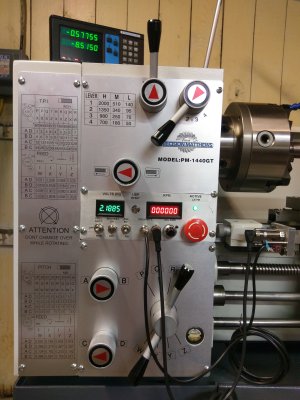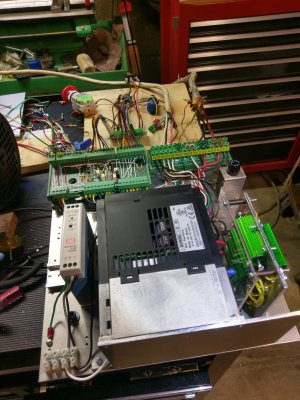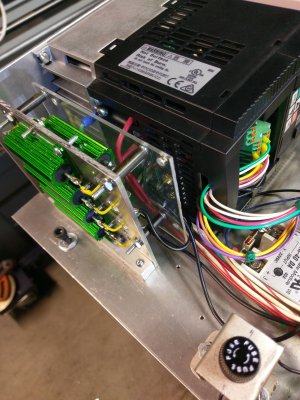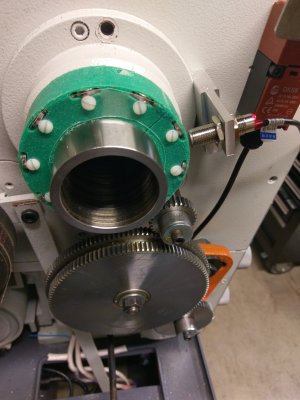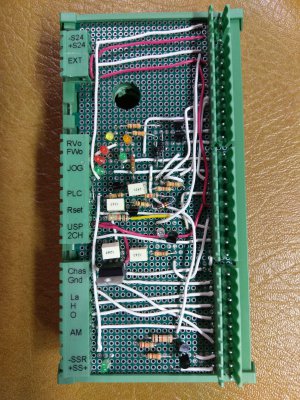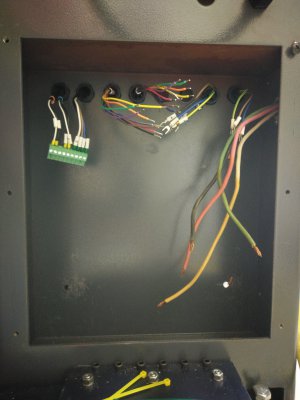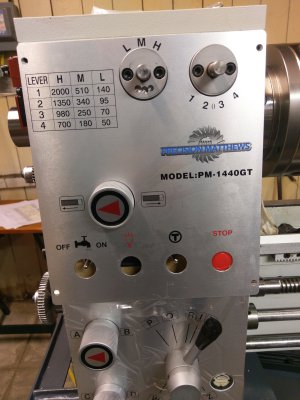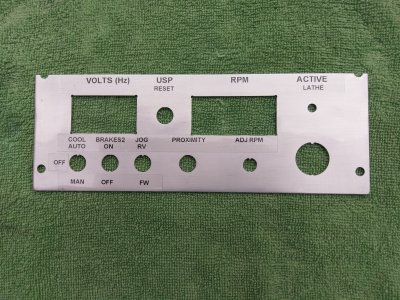VFD conversion using solid state electronic components.
I finally finished documenting my PM1440GT lathe VFD conversion and want share it. It took me longer to write this up than it did to actually build the new electronics! (Are these sorts of things every really finished?)
I apologize upfront for its being so long. I just wanted to make it complete before I posted it so that most of it was at the same posting... but it seems there is always something else to add. Also, this is my memory document... so I can fix or improve the installation after I have long forgotten what I did!
I replaced all of the original mechanical relay controls with discrete solid state components. I have not seen any other post where people got rid of the mechanical relays in this lathe conversion, but surely they have so on others. In doing so I was also able to also eliminate the large power transformer. Hence, the space requirements significantly decreased and I was able to get everything into the original lathe enclosure with room to spare. It even includes a homemade, inexpensive, 50 Ohm 400 watt (or a 37.5 Ohm by 300 watt) braking resistor. So there are no external cabinets or enclosures. Only a power switch at the wall. The value of this braking resistor can easily be changed to other values if so desired. Additional features such as proximity sensor, drive frequency display and RPMx10 display, alternative e-breaking rate, auto/manual coolant, +-Jog, etc. are included along with more safety factors. It has been completed and being used for several months without any observed problems or failures. I have made enough machining mistakes to believe it is quite safe.
There are two separate Parts to the document. Skip Part 1 if you do not need to know how the original factory built 3-phase power system was constructed and operated. Part 2 is the detailed description of the new VFD system. Part 1 contains text, figures, tables and photos, but there were too many photos to include them in Part 2. There is also a list of parts and suppliers near the end. Part 2 has a table of contents with links to the text, hence you can quickly jump to the text points and the figures at the end.
The technical description is long so it may be faster to get an idea of things by just looking at the figures, which are included in the document, and the pictures, which are separate due to their size. If you think you are serious about doing a similar conversion, then have a read! I have tried to put enough details in it to allow even someone who has not worked with transistors for a while to understand what is going on. I have also tried to provide a limited description of how this VFD works and is set up. You may not need these.
I wish to thank the HM folks for their many posts. Since I had hardly worked with inverters, or designed for one before, these posts were very helpful. Mark's (@mksj) posts, especially in suggesting the VFD model and its program settings are much appreciated. Private discussions with @ptrotter were very helpful and also appreciated.
Let me know, what you think, concerns, what I did wrong, etc. I welcome ANY question.
Dave
PS. I am not for sure if I can post all of this in one try so it may take a few attempts. I also have other photos if any body needs to see them.
PSS. I also apologize for the obnoxious footer on the document. This is driven by the HM Rule #15. The folks at HM say that they will be making this rule more friendly in the future.
I finally finished documenting my PM1440GT lathe VFD conversion and want share it. It took me longer to write this up than it did to actually build the new electronics! (Are these sorts of things every really finished?)
I apologize upfront for its being so long. I just wanted to make it complete before I posted it so that most of it was at the same posting... but it seems there is always something else to add. Also, this is my memory document... so I can fix or improve the installation after I have long forgotten what I did!
I replaced all of the original mechanical relay controls with discrete solid state components. I have not seen any other post where people got rid of the mechanical relays in this lathe conversion, but surely they have so on others. In doing so I was also able to also eliminate the large power transformer. Hence, the space requirements significantly decreased and I was able to get everything into the original lathe enclosure with room to spare. It even includes a homemade, inexpensive, 50 Ohm 400 watt (or a 37.5 Ohm by 300 watt) braking resistor. So there are no external cabinets or enclosures. Only a power switch at the wall. The value of this braking resistor can easily be changed to other values if so desired. Additional features such as proximity sensor, drive frequency display and RPMx10 display, alternative e-breaking rate, auto/manual coolant, +-Jog, etc. are included along with more safety factors. It has been completed and being used for several months without any observed problems or failures. I have made enough machining mistakes to believe it is quite safe.
There are two separate Parts to the document. Skip Part 1 if you do not need to know how the original factory built 3-phase power system was constructed and operated. Part 2 is the detailed description of the new VFD system. Part 1 contains text, figures, tables and photos, but there were too many photos to include them in Part 2. There is also a list of parts and suppliers near the end. Part 2 has a table of contents with links to the text, hence you can quickly jump to the text points and the figures at the end.
The technical description is long so it may be faster to get an idea of things by just looking at the figures, which are included in the document, and the pictures, which are separate due to their size. If you think you are serious about doing a similar conversion, then have a read! I have tried to put enough details in it to allow even someone who has not worked with transistors for a while to understand what is going on. I have also tried to provide a limited description of how this VFD works and is set up. You may not need these.
I wish to thank the HM folks for their many posts. Since I had hardly worked with inverters, or designed for one before, these posts were very helpful. Mark's (@mksj) posts, especially in suggesting the VFD model and its program settings are much appreciated. Private discussions with @ptrotter were very helpful and also appreciated.
Let me know, what you think, concerns, what I did wrong, etc. I welcome ANY question.
Dave
PS. I am not for sure if I can post all of this in one try so it may take a few attempts. I also have other photos if any body needs to see them.
PSS. I also apologize for the obnoxious footer on the document. This is driven by the HM Rule #15. The folks at HM say that they will be making this rule more friendly in the future.
Attachments
-
PM 1440GT Part 1 FacOriglElecDescript DNL L910_1440.pdf1.8 MB · Views: 480
-
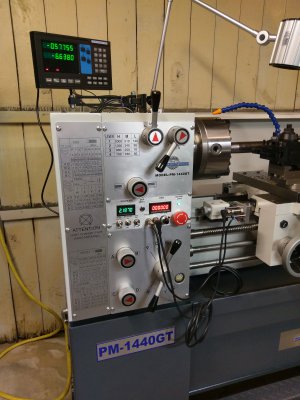 07b IMAG3287 Front Panel Finished_Prox Stop IMAG3287.jpg3.3 MB · Views: 683
07b IMAG3287 Front Panel Finished_Prox Stop IMAG3287.jpg3.3 MB · Views: 683 -
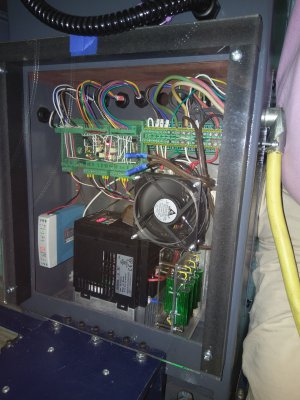 08a IMAG3313 Rear Final IMAG3313.jpg4 MB · Views: 582
08a IMAG3313 Rear Final IMAG3313.jpg4 MB · Views: 582 -
Figure 3 PM1440GT Part 2 VFDDescript links DNL L910_1440.pdf241.1 KB · Views: 322
-
PM 1440GT Part 2 VFDDescript links DNL L910_1440b.pdf1 MB · Views: 420
-
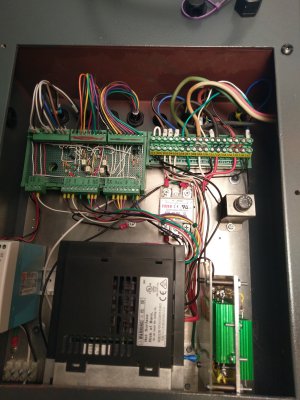 08b IMAG3013 Rear IMAG3013.jpg3.4 MB · Views: 525
08b IMAG3013 Rear IMAG3013.jpg3.4 MB · Views: 525

